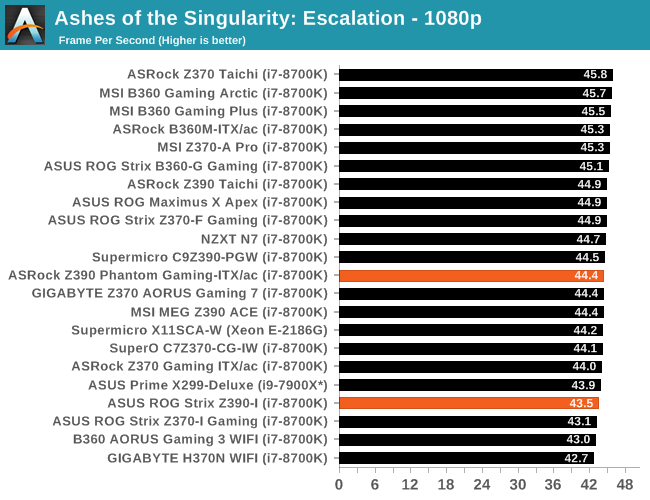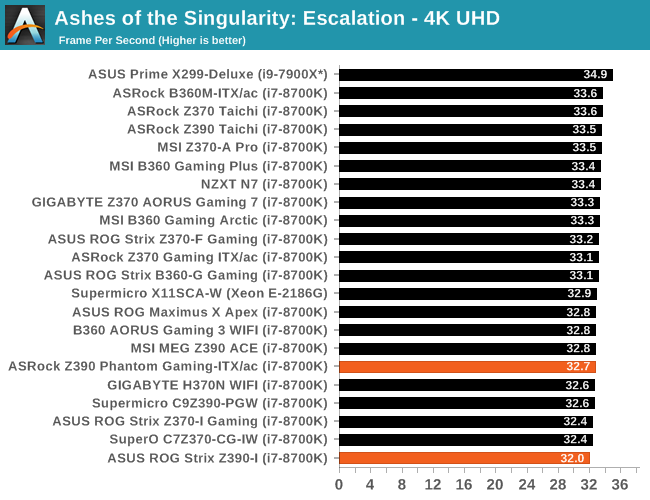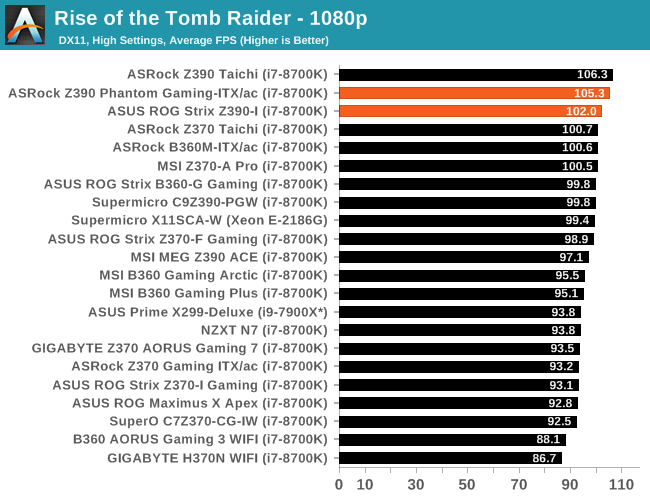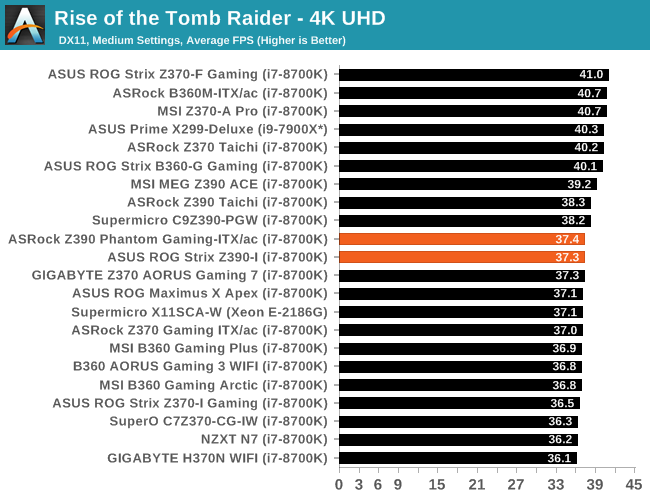Tiny at $200: ASUS Z390-I Gaming vs. ASRock Z390 Gaming-ITX/ac Review
by Gavin Bonshor on February 12, 2019 10:00 AM ESTGaming Performance
AoTS Escalation
Ashes of the Singularity is a Real-Time Strategy game developed by Oxide Games and Stardock Entertainment. The original AoTS was released back in March of 2016 while the standalone expansion pack, Escalation, was released in November of 2016 adding more structures, maps, and units. We use this specific benchmark as it relies on both a good GPU as well as on the CPU in order to get the most frames per second. This balance is able to better display any systematic differences in gaming as opposed to a more GPU heavy title where the CPU and system don't matter quite as much. We use the default "Crazy" in-game settings using the DX11 rendering path in both 1080p and 4K UHD resolutions. The benchmark is run four times and the results averaged then plugged into the graph.



Rise of the Tomb Raider
Rise of the Tomb Raider is a third-person action-adventure game that features similar gameplay found in 2013's Tomb Raider. Players control Lara Croft through various environments, battling enemies, and completing puzzle platforming sections, while using improvised weapons and gadgets in order to progress through the story.
One of the unique aspects of this benchmark is that it’s actually the average of 3 sub-benchmarks that fly through different environments, which keeps the benchmark from being too weighted towards a GPU’s performance characteristics under any one scene.













26 Comments
View All Comments
IKonev - Wednesday, February 13, 2019 - link
Re: TB3 comments, it evidently runs up to a max of half of the rate bandwidth (so, 20GB/s) using only 2 PCIe 3.0 lanes as opposed to the regular 4 lanes - here's what Tweaktown had to say:"Thunderbolt 3 is from the Intel JHL6240 Thunderbolt 3 controller; it's a low power 1.2W single port part that connects to the chipset through two PCI-E 3.0 lanes."
And yes, TB3 ports can effectively be used as USB ports, but the transfer speeds will max out at that of the cable & device plugged into the port.
romrunning - Wednesday, February 13, 2019 - link
Thanks for the helpful info! Maybe this review can be updated with that info.Dug - Wednesday, February 13, 2019 - link
I can't wait for motherboard reviews that go into what the motherboard actually does besides gaming benchmarks.I do like the power and boot times included, but really things like thunderbolt, usb, wifi, sound, memory, and storage (both sata and m.2) should all be tested. This is what makes or breaks a motherboard.
timecop1818 - Wednesday, February 13, 2019 - link
Also interesting to know what chipset handles HDMI2 conversion. Intel CPUs only support DisplayPort...hanselltc - Thursday, February 14, 2019 - link
asrock all day. that plastic shroud is soooooooooo ugly, and asrock has hratsinks instead.niemi - Wednesday, February 20, 2019 - link
Gavin, which program do you use to measure DPC latency?Is it idle or load numbers, and for how long do you run the test?
Any chance of a ‘highest measured’ or a curve over time as a supplement to the median? That would help when comparing for spikes.